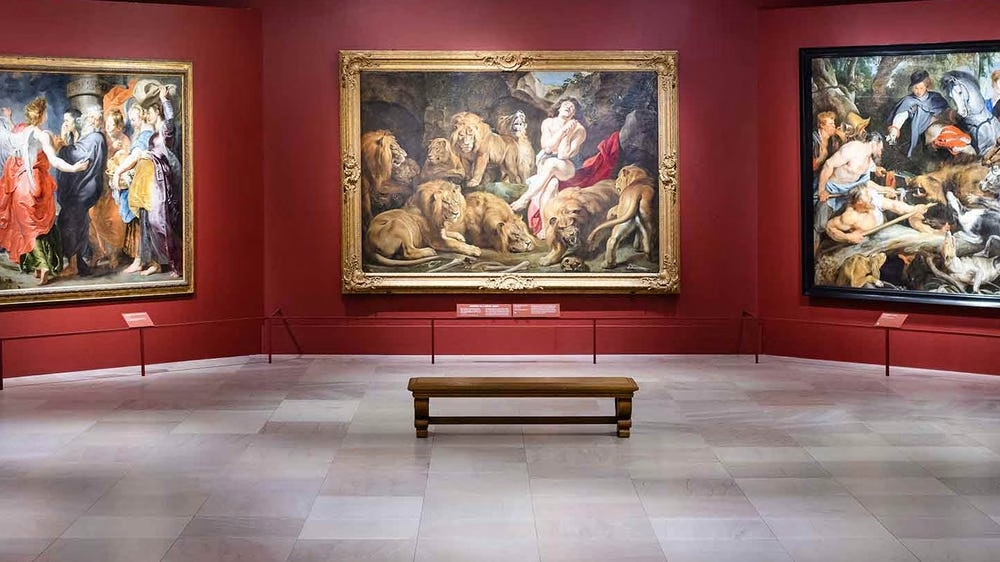Is it possible that the National Gallery purchased a £2.5 million faux masterpiece? This question has lingered among experts since the gallery acquired Peter Paul Rubens’ “Samson and Delilah,” a long-lost work from the Flemish artist, in 1980.
Forty-five years later, the controversy is reignited by a recently launched petition urging the gallery to fulfill its 1997 promise of a public discussion regarding the painting’s authenticity. This time, the focus is on the back of the artwork.
The debate surrounding “Samson and Delilah” began shortly after the National Gallery made its purchase. Known to have been painted around 1609 before disappearing from history for centuries, the painting was considered a highlight of the gallery’s collection. However, critics quickly pointed out what they perceived as clumsy brushwork, likening it to a bold 20th-century copy. Rubens scholar Katarzyna Krzyżagórska-Pisarek called the painting “highly problematic” and “oddly modern,” while Christopher Wright, a specialist in 17th-century art, stated it “lacks Rubens’s subtlety.”
Strong feelings persist in the art community regarding the painting’s origins. Michael Daley, director of ArtWatch UK, asserts he has gathered extensive evidence against its attribution to Rubens, labeling it “the biggest museum scandal” and suggesting a concerted effort to hide a significant purchasing mistake.
A recent twist emerged from comments made by Christopher Brown, a former curator of the National Gallery, about the painting’s backing. In an interview with The Guardian, Brown first affirmed its authenticity but later noted that the gallery had applied a modern blockboard to the back. This revelation has reignited skepticism among those doubting the painting’s legitimacy.
The backs of artworks often carry historical significance, and it appears that the panel on which “Samson and Delilah” was painted has been planed down and affixed to a modern blockboard, erasing any underlying clues about its age and authenticity. Critics are concerned that this alteration may have concealed a maker’s mark that could indicate whether the panel was created after 1609, which would suggest the painting is a copy.
When acquired by the gallery in 1980, “Samson and Delilah” was sold as a panel, without any mention of modern backing. The first public acknowledgment of the blockboard surfaced in a 1983 report, one year after two years of gallery ownership during which a timber expert deemed it an unproblematic piece.
The National Gallery has stated that the painting’s backing was likely applied “probably during the 20th century,” indicating that the original panel had been thinned to about 3mm and attached to a new blockboard prior to their acquisition, thus obscuring any marks that could verify its historical context. An earlier report had noted it was “excellently preserved” and measured between 25mm and 40mm thick, raising questions about the rationale for modifying it.
Wright emphasized the significance of this issue because the blockboard hides crucial evidence regarding the painting’s origins. The immaculate condition of the panel when it appeared at auction indicated it was not in a state of disrepair, further complicating the narrative.
After The Guardian questioned him, Brown backtracked on his earlier assertion, stating that he trusts the gallery’s claim that the backing was applied before they acquired the piece. Despite his initial insistence on its importance, he later stated that he had no reason to doubt the gallery’s account.
Daley found Brown’s initial revelations “startling,” especially as he had obtained correspondence from the gallery in 2002 denying any involvement by their restorers. Historically, this painting has been attributed to lesser artists, and it was only identified as a Rubens in 1929 by German historian Ludwig Burchard, who has since been criticized for misattributing works for personal gain.
Krzyżagórska-Pisarek pointed out that at least 75 works previously attributed to Rubens by Burchard have been officially reassessed. She believes “Samson and Delilah” is just one instance of broader issues, citing the anachronistic red of Delilah’s dress, anatomical flaws in Samson’s figure, and a lack of expected aging cracks.
Frustrated by the silence from the gallery, she expressed the need for debate, asserting, “This cannot be the original Rubens.”
Amid this ongoing mystery, one thing is certain: the provenance of “Samson and Delilah” will continue to provoke discussions and debates in the art world, as scholars and enthusiasts alike advocate for a thorough examination of its authenticity.
The National Gallery maintains that “Samson and Delilah” is widely accepted as a Rubens masterpiece, with no expert disputing this attribution. They claim the work showcases the highest aesthetic quality and reflects the artist’s learnings from Italy upon his return to Antwerp in 1608. The findings on the panel’s condition and modifications, published by Joyce Plesters and David Bomford in 1983, are still upheld by the gallery.













